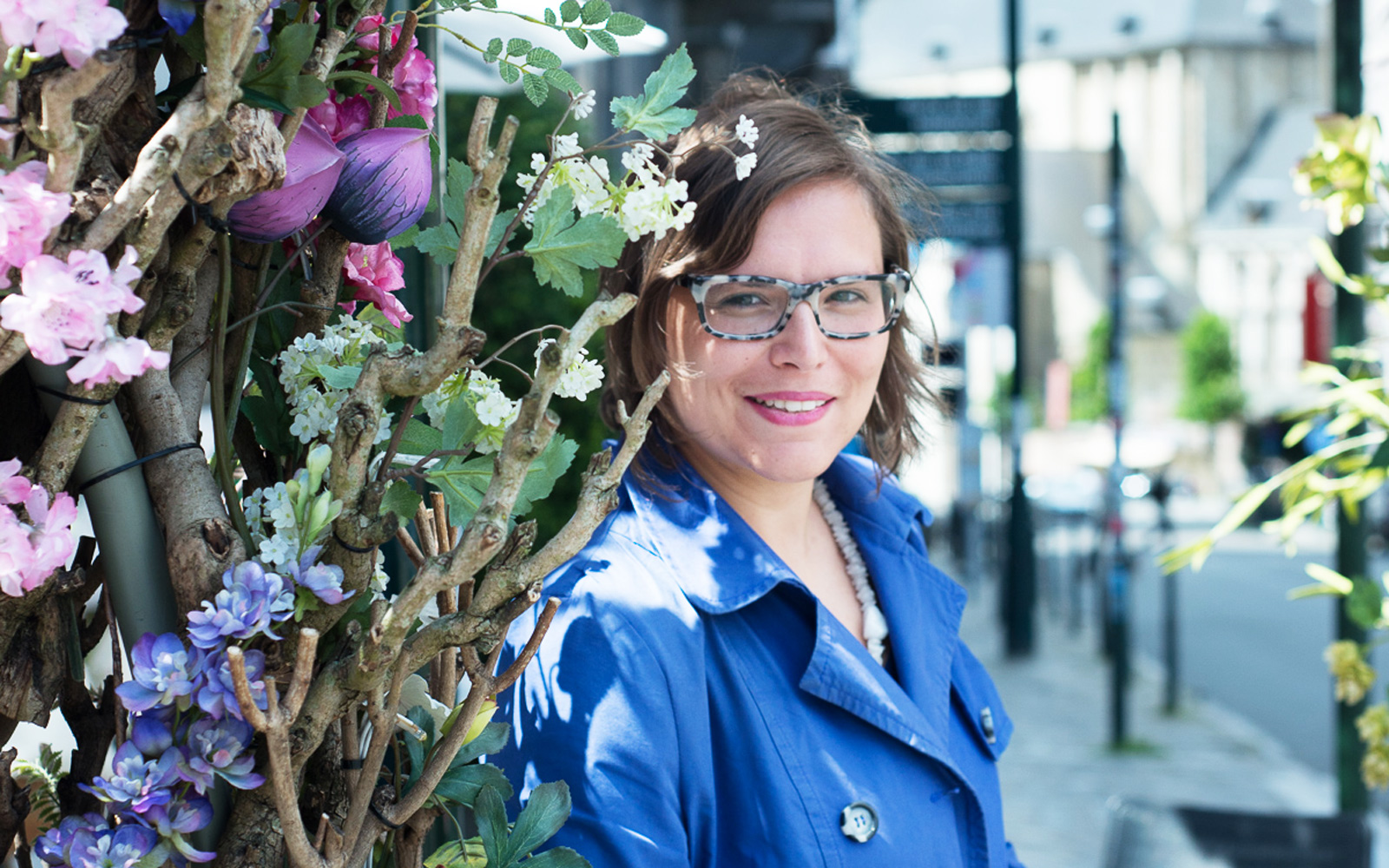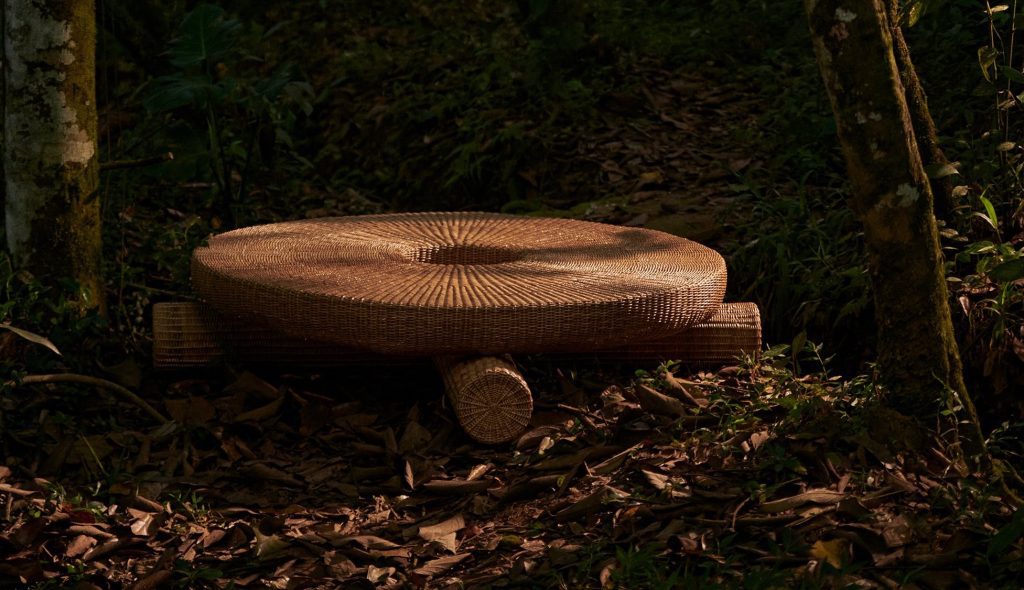

The new Brussels Collection: Q&A with Elien Haentjens
“Brussels does not have a main art or design school. We’re not nationalistic and we’re rather quiet and humble about what we do. Because of this, artists feel free to explore their creativity.”
When it comes to the very best of Belgian design, who better to give a guided tour than art historian and journalist Elien Haentjens? Based in Brussels, Haentjens uses her expertise as a leading art and design journalist to curate exhibitions about Belgian design in Brazil and further afield.
Her latest project, a collaboration with online design gallery Adorno, saw her curate a collection of contemporary design objects from the region of Brussels. Comprising 17 pieces spanning furniture, lighting and decorative objects, the collection will debut in March (8 – 11) at Collectible, a new art and design fair in Brussels. Highlights from the collection include a series of concrete and steel structures, inspired by concrete reinforcements; a cast bronze sculptural chair; and tables crafted from fibres found in Carnaúba palm trees.


Adorno launched in 2017 and exists somewhere between online gallery, marketplace, and design city guide. Striving to diversify design, it brings together designers, curators, collectors and enthusiasts from cultural hubs around the world to create a worldwide design community. Throughout 2018, Adorno is collaborating with leading design experts in 20 cities across the world. Like Haentjens, each tastemaker will present a curated collection of design objects created by some of the most talented makers in their region.
With Collectible fast approaching, and us being as nosy as ever, we thought it would be a tremendous idea to catch up with Haentjens. In the interview the follows the curator discusses what gives Belgian design its kick, how she approached the curation of Adorno’s Brussels collection, and where to get a good waffle in the capital city.


What does Adorno offer which local bricks and mortar galleries don’t?
Adorno offers flexibility to its designers and by doing so it opens up new possibilities. By avoiding bricks and mortar, Adorno’s prices are more affordable for the end consumer, and at the same time the designer gains more. Another advantage is that products are on show 24/7. In a classic gallery the pieces of a designer are only once in a while on show. Because of the international DNA of Adorno, each designer can immediately reach the global market.
You’ve previously curated exhibitions championing Belgian design in Brazil, what makes the Belgian design scene distinctive?
The Belgian design scene is rich, diverse and high quality. Although Belgium is small, it is culturally diverse, with both German and Latin influences. There is no main artistic direction or art school, so people feel free to experiment. Since the Middle Ages, open-minded and progressive art lovers, and later design lovers, have supported artists in their creative process.
At different points in history the country was economically doing very well and this resulted in a well-developed cultural scene with worldwide-known artists such as Jan Van Eyck and Pieter Paul Rubens. At the end of the 19th century Victor Horta designed the Tassel House, which can be seen as the manifesto of the Art Nouveau movement. Another important figure in this economically flourishing Brussels period was Henry Van de Velde, who worked according to the idea “form follows function”. He developed products that could take advantage of industrial machines as tools to make design affordable for everybody. Afterwards he not only founded the – later Bauhaus – art school in Weimar but also La Cambre in Brussels. Even today students are still taught according to his revolutionary ideas.
This rich history forms the breeding ground of the contemporary creative Belgian scene. In the last 20 years Belgian design companies and designers such as Maarten Van Severen or Vincent Van Duysen have gained more international attention.


What other ‘design cities’ do you admire?
São Paulo, because I know most of the designers and it feels like my second home, and Milan because it played, and plays, a major role in the design world. I’m also curious to explore the design world of Mexico, also because this year it is the Design Capital of the World.
If a design-loving friend came to stay with you in Brussels for 24 hours, where in the city would you take them?
– Breakfast at Jam Hotel, a project by Lionel Jadot
– The house and atelier of Victor Horta (now the Horta Museum)
– La Patinoire Royale, the biggest gallery in Europe. It used to be a skating rink!
– The galleries of Pierre Marie Giraud, Xavier Hufkens and Almine Rech
– The following stores: Thierry Boutemy, Details and La forêt de Lucia
– Lunch at Chez Frans
– Marolles, a neighborhood full of antiques and vintage design shops
– Grote Markt, the most beautiful marketplace in the world
– Galleries including Maniera and Fracas and design stores like Diito and La Fabrika
– Stijl, a shop where you can find Belgian fashion
– Gaston, another project of Lionel Jadot, to eat a Brussels waffle
– MAD, the recently opened centre for design and fashion
– Dinner at Au Vieux Saint Martin, where you find all Belgian specialties
– For a last beer at Chez Richard, the bar where antique dealers from the neighborhood sit during the day and young people come together at night


Article originally Published 5th of March at Zettler.








